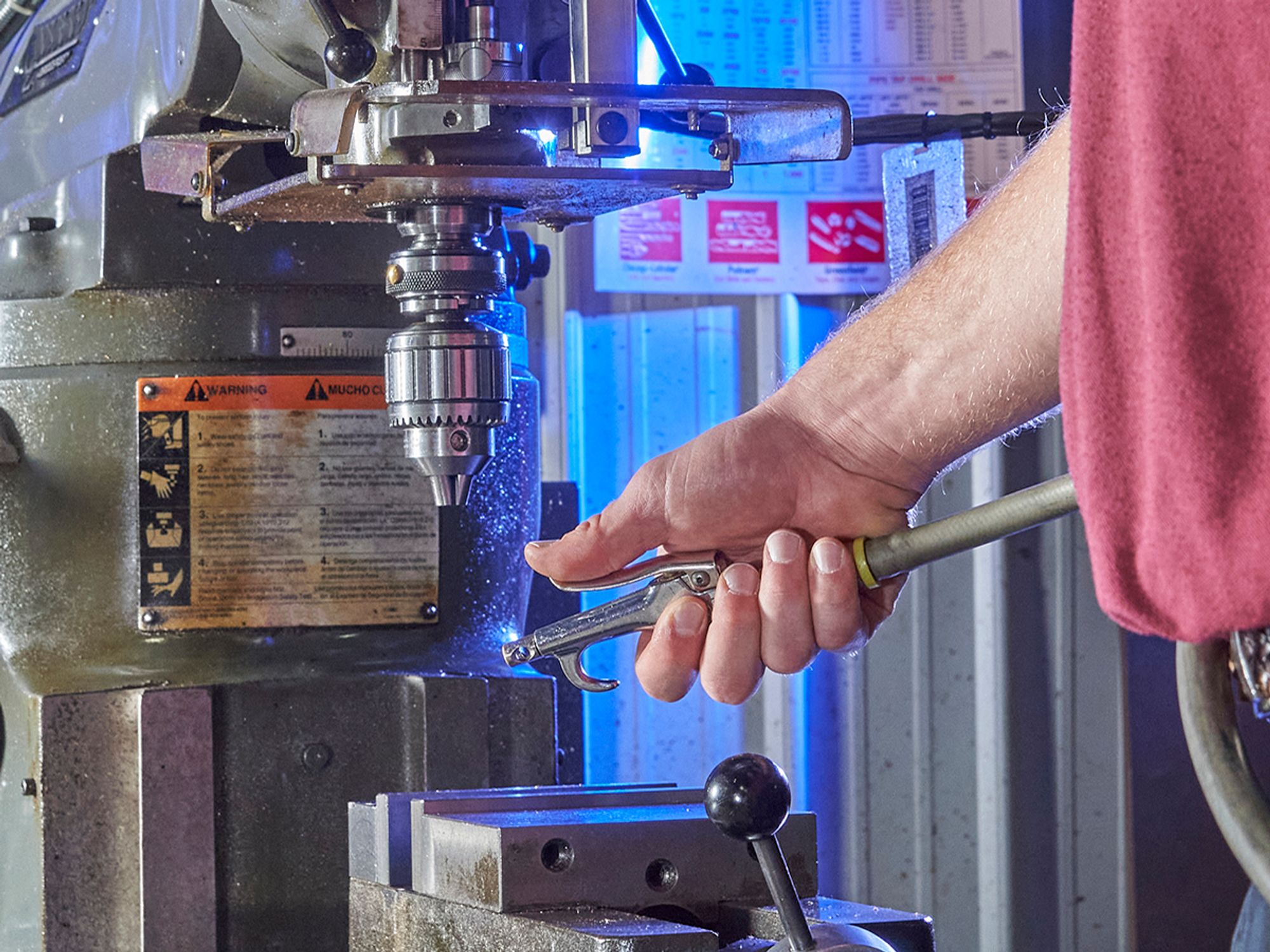InstituteSafety & HealthGeneral Industry SafetyMachine Guard Maintenance and RepairMachine GuardingIn Depth (Level 3)Focus AreaEnglishMachine GuardingAnalysisMachine Guarding HazardsUSA
What should employers look for when inspecting drill presses?
['Machine Guarding']

- Primary safeguarding methods for drill presses protect operators from point-of-operation hazards, loose material, and hazardous moving parts.
General
Employers should check whether:
- Operators and other employees are protected from rotating parts, flying chips, and cuttings (29 CFR 1910.212(a)(1));
- Specially designed shields are attached to the quill and used to guard the point of operation (1910.212(a)(3); 1910.213; OSHA Guidance Publication 3170);
- For example, telescopic shielding that retracts as the drill bit contacts the stock or a more universal-type shield can be used;
- All automatic machines and high-production machines have enclosures designed and installed to guard the employee from the entire drilling operation (OSHA Guidance Publication 3170);
- Barrier guarding is provided over the motor, belts, and pulleys (1910.219; 1910.213(a)(9));
- An adjustable guard is installed to cover the unused portion of the bit and chuck above the material being worked (1910.212; 1910.213); and
- Provisions are made to prevent machines from automatically restarting and injuring operators when power is restored after power failures. (1910.213(b)(3))
Operation
Employers should check whether:
- Safe work practices are developed and implemented, such as removing the chuck immediately after each use (OSHA Guidance Publication 3170);
- Periodic inspections are conducted to ensure compliance with all applicable safe operating procedures (OSHA Guidance Publication 3170);
- All operators are trained and supervised until they can work safely on their own (OSHA Guidance Publication 3170);
- All drill presses are used only for their intended purposes (OSHA Guidance Publication 3170);
- All drill presses are anchored to prevent movement during operation (1910.212(b));
- Operators always secure stock to the drill press bed with clamps or other work-holding equipment before drilling so the stock will not spin or strike them (OSHA Guidance Publication 3170);
- Operators are prohibited from manually securing material to the drill press bed while the drill bit is rotating (OSHA Guidance Publication 3170);
- All projecting chucks and set screws are replaced with non-projecting safety-bit chucks and set screws (1910.219(h); 1910.213(l)(1)); and
- Operator controls are covered so that drill presses cannot be turned on accidentally. (OSHA Guidance Publication 3170; 1910.213(b)(6))
Maintenance
Employers should check whether:
- Employees ever adjust drill presses while the drill bit is rotating (1910.147);
- All drill presses are shut off when unused or unattended for any period (OSHA Guidance Publication 3170); and
- Employees servicing and maintaining machinery and equipment always follow an energy control program in accordance with 1910.147. Note: The Occupational Safety and Health Administration (OSHA) recognizes that some minor servicing may have to be performed during normal production operations, so a lockout/tagout exception is allowed for this requirement. For example, minor drill press tool changes and adjustments may be performed without lockout/tagout if the machine’s electrical disconnect or control (on/off) switches control all the hazardous energy and are: (1) properly designed and applied in accordance with good engineering practice, (2) placed in an off (open) position, and (3) under the exclusive control of the employee performing the minor servicing task. (Details are found at 1910.147(a)(2)(ii))
PPE
Employers should:
- Assess the workplace to determine whether there are hazards or potential hazards that require the use of personal protection equipment (PPE) (1910.132(d));
- Provide affected employees with the required PPE and enforce its proper use (1910.132(d));
- Provide eye/face protection where there is a hazard of flying objects (1910.132; 1910.135; OSHA Guidance Publication 3170); and
- Instruct employees to secure long hair in a net or cap and not to wear gloves, jewelry, or loose-fitting clothing while operating a drill press. (OSHA Guidance Publication 3170)
